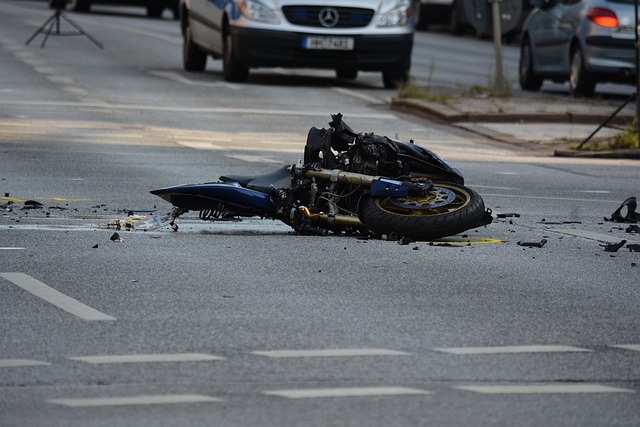Motorcycle safety remains a persistent issue that too often slips under the radar. Despite the obvious risks riders face every day, it rarely gets the attention it deserves from both policymakers and the public. This neglect can have serious consequences, not just for those who ride but for everyone sharing the roads. The problem is not new, but the urgency to address it feels stalled by competing priorities and a lack of consistent focus.
The reality is clear. Motorcyclists are vulnerable. They lack the protection of a metal cage, leaving them exposed during crashes. Yet, discussions about improving safety measures often fade away before any real changes happen. Whether it’s funding for safer road designs or stricter enforcement of traffic laws, the support rarely matches the risks involved. This ongoing gap leaves riders caught in a cycle of preventable harm.
What adds to the challenge is how safety concerns often compete with other urgent public matters. Budgets and attention lean toward issues seen as more pressing or wide-reaching, even if they don’t affect motorcycle riders directly. This imbalance results in slow progress and leaves a portion of the population facing unnecessary danger on roads that don’t always account for their needs.
What Happens When Accidents Occur
According to one legal practice, when a motorcycle accident takes place, the consequences tend to be severe. Unlike car crashes, where airbags and seat belts provide protection, motorcyclists face direct impacts that can cause serious injuries or worse. Head trauma, broken bones, and road rash are common, and recovery can be long and difficult. These injuries don’t just affect the rider; they ripple out to families and communities struggling with sudden loss or long-term care needs.
Statistics show that many motorcycle accidents involve factors that could be addressed with better education and infrastructure. Speeding, inattentive drivers, and poor road conditions all contribute to crashes. While some blame riders, it’s important to recognize the shared responsibility of all road users and those in charge of maintaining safe environments. Ignoring these facts only makes the problem harder to fix.
The aftermath of an accident also highlights gaps in emergency response and medical care tailored for motorcyclists. Quick and specialized treatment can drastically improve outcomes, yet not all communities have systems optimized for these cases. The lack of consistent post-accident support adds to the challenges riders and their families face.
How Safety Measures Fall Short
There are safety measures that exist but often don’t receive the necessary support or enforcement. Helmet laws, for example, are essential, yet they vary widely depending on where you live. Some places have strict requirements, while others are more lenient, allowing riders to choose whether to wear protective gear. This inconsistency creates confusion and leaves many riders vulnerable, especially younger or less experienced ones.
Infrastructure improvements also lag behind what is needed. Roads with sharp curves, uneven surfaces, or debris increase risks for motorcyclists. Unfortunately, budget priorities rarely favor projects aimed specifically at rider safety. Instead, funds often go toward general maintenance or other pressing issues. This means that many dangerous spots remain, increasing the chance of crashes that could have been avoided.
Another issue is the enforcement of existing safety regulations. Even where strong laws exist, enforcement can be inconsistent or underfunded. Without visible consequences, risky behaviors persist. This creates an environment where both riders and other drivers may not feel compelled to follow safety guidelines, undermining the whole system.
The Role of Public Awareness and Education
Raising public awareness about motorcycle safety remains a challenge. Many drivers underestimate how hard it is to spot a motorcycle in traffic or misunderstand how they behave on the road. This lack of knowledge contributes to accidents caused by blind spots or sudden maneuvers. Educational campaigns exist but are often short-lived or poorly funded, limiting their reach and effectiveness.
For riders, ongoing training and education are equally important. Learning to handle various road conditions, understanding defensive driving techniques, and knowing how to react to hazards can save lives. Unfortunately, not all riders have access to quality programs or may not prioritize continuous learning. Without a strong culture of safety and education, risky behaviors can persist.
Public attitudes toward motorcycles also influence safety outcomes. In some communities, stereotypes or misconceptions about riders can lead to less sympathy after accidents or lower support for safety initiatives. Changing these perceptions requires persistent effort and communication that highlights the shared responsibility of all road users.
What Could Change If Safety Was Prioritized
If more attention and resources were devoted to motorcycle safety, the difference could be significant. Comprehensive helmet laws applied everywhere would reduce the most severe injuries and deaths. Investing in road improvements tailored to rider needs would create safer routes and lower accident rates. Stronger enforcement of traffic laws would hold negligent drivers accountable and encourage safer behavior all around.
Education would also play a bigger role. Public campaigns could reshape how drivers see and share the road with motorcycles. Riders would have greater access to training and information that supports safer practices. These changes wouldn’t just protect motorcyclists; they would benefit everyone by reducing accidents and easing the strain on emergency services.
On a broader scale, prioritizing motorcycle safety could influence related areas like vehicle design, insurance policies, and urban planning. Coordinated efforts across these fields would lead to a more comprehensive approach, addressing not only immediate risks but also long-term cultural and systemic issues around road safety.
Moving Forward with Real Attention to Safety
It’s clear that motorcycle safety needs to be more than a footnote in transportation discussions. Recognizing the risks riders face and addressing the gaps in policy and infrastructure requires genuine commitment. This means policymakers, communities, and individuals must all play a part in pushing the issue forward and refusing to let it be sidelined.
Ultimately, safety improvements depend on prioritizing those most vulnerable on the road. Riders deserve respect and protection, not silence and neglect. Taking this seriously means preventing needless injuries and saving lives. When motorcycle safety is finally treated as a priority, it will bring benefits far beyond just the riders themselves.
Moving forward will require persistence and cooperation across different levels of government and society. Change is rarely immediate, but steady efforts that include research, advocacy, and practical solutions can make roads safer for everyone. The choice to act is one that could spare countless families from tragedy and build a culture that values every life on the road.







Recent Comments